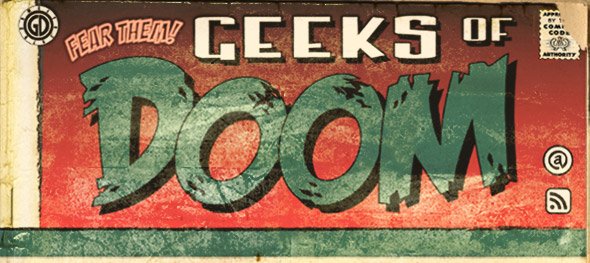
Recently, we started a new podcast here at Geeks Of Doom called Violent Delights. It follows HBO’s reboot of Westworld, which began airing and streaming on October 2nd, and takes a deep look into the themes and storytelling that take place on the show. We couldn’t possibly hope to understand what Westworld 2016 could become without taking a look back at the original Westworld (1973). Here’s how this 43-year-old iconic film stands up to the scrutiny of fall 2016.
Anyone who’s ever delved into a DC or Marvel comic has noticed that, for the most part, while the world those stories take place in may be nearly identical to our own, it’s just slightly…better. The Dark Knight Rises and The Avengers both took place in New York in 2012, but both stories employ superior technology and characters with the goodwill to use them well — to take their power, however gained, and employ it in opposition of the selfish, the greedy, and the grim for the embetterment of all those who are too weak to stand up and face those threats themselves. We call these people heroes.
Michael Crichton‘s groundbreaking 1973 film Westworld has some of these qualities in common. The story is clearly set in the late 20th century with accents, clothes, and sensibilities that are undeniably tied to that oh-so-interesting era. The technology, while bereft of anything resembling today’s Internet or mobile devices, is well in advance of what was possible at the time — nay — impossibly farther along on some levels than what contemporary society has access to today. Where Westworld differs from, and perhaps falters in comparison with those stories mentioned above, is in its characters. The difference?
There are no heroes in Westworld.
Those who’ve seen Jurassic Park, a novel turned to film that’s also born of Michael Crichton’s visionary imagination, will recognize the setting, despite the 20-year time leap from Westworld’s release in 1973 to Steven Spielberg’s 1993 masterful adaptation. There is an amusement park with a particularly new type of attraction. It’s the culmination of some clever marketing spun upon the bleeding edge of science and technology. It’s controversial, but exciting and intriguing. It’s isolated to assist the immersion of the experience and of course it’s expensive, but it’s worth it.
Westworld’s draw differs in that it isn’t conceived as a family-friendly romp through history and nature like the beautiful and mysterious Jurassic Park. It’s purpose is to immerse the visitor in fantasy, not by showing a world before civilization took hold, but by creating a world based on the morally reprehensible aspects of civilization’s past. The place is called Delos, and once the hovercraft drops you off, you’ve a choice of immersing yourself in the lascivious pleasures of the ancients in Roman World, the romance of Dark Age Europe in Medieval World, or partaking in the rampant lawlessness of the postbellum, American West, Western World, or Westworld, as most refer to it.
Our characters are resort guests excited for their chance to revel in these pretend lands, full of simulated climates, and robotic servants, pets, lovers, and foes.

[Venerable Sci-Fi actor Majel Barrett played Carrie, a robotic madame in the 1793 Film]The resort advertises that there’s no way to get hurt. The Westworld’s guns have heat sensors that allow firing on cold robotic bodies but not on the warm flesh of humanity. There are daily jousts in Medieval World, bank robberies in Westworld, and gladiatorial tournaments in Roman World. Likewise, there are affairs with queens and damsels, willing Western whores, and references to exotic orgies which, while completely off-screen, foreshadow a certain infamous scene in Caligula (1979). But again, humans aren’t shooting or entering other humans — they’re mostly men acting out such vices on machines made to look like us. Their artificial intelligence and their bodies are nearly indistinguishable from our own, allowing the human guests of the resort to treat these robots as they please; secure in the knowledge that at day’s end, while they lie in their drunken stupors, quiet and fastidious workers will alight on the various sections of the park to remove broken, battered, and shot robots for repair, and to fix broken banisters or castle ramparts. It’s Grand Theft Auto in meatspace; told in an age before video games and virtual reality were notions that audiences could easily fathom.
Crichton’s tale is as visionary for what it lacks (heroes) as what it includes — a 1973 window that allows for a peek into our incredible, technologically reliant world now of 2016. “Violent Delights” co-host Andrew Sorcini gleefully noted that it was the first time a writer hints at the effects of a computer virus on the silver screen. Just like today, software, or “programming,” is regularly updated, and speaking to machines is a regular occurrence.

[Mission Impossible II and Chronicles of Riddick star Thandie Newton takes over the role of robotic prostitute in the re-imagined Westworld of 2016.]This lack of heroes is a problem, however visionary it may have been when it comes to cinematic storytelling. For those familiar with Jessica Jones series on Netflix, Westworld sometimes feels like watching the Marvel series from Kilgrave’s perspective, but without any of the sympathy-causing psychological introspection that we learn about that villain. In Westworld, the human characters revel in compelling somewhat sentient robots to do things that they may not want to do, and that in many cases, that no human would want to do. They get shot, or slashed, stabbed or poked, and are forced to continue engaging in these actions regardless of the pain. When the inevitable happens and these violent delights indeed lead to violent ends, the audience experiences little to no empathy for those humans who fall. Unlike Jurassic Park, where the lives of adorable children and awe-inspiring scientists are at stake, we care neither for the welfare of resort/park employees nor the guests. The camera does follow a human guest around the facilities after all hell breaks loose, but we’re not really left feeling that we should root for him. We are, perhaps, just as interested in seeing how he might die at the hands of the newly liberated automatons than we are was in seeing whether he’ll be able to escape.
On the flipside, none of the leading robotic characters excite the audience either. The Gunslinger, a resort robot depicted by legendary actor Yul Brenner, which has been designed with a very specific function, expresses little to nothing in the way of self-determination. The beautiful queen, the love for which a human guest duels, has nothing to say about her place nor her plight. Contrast this soullessness with similar storytelling which hit the silver screen less than ten years after Westworld’s release, where Blade Runner audiences were introduced to Daryl Hanna’s Pris and Rutger Hauer’s Roy. Despite their severely limited life spans, the characters of these artificial people in Blade Runner had grown beyond their design parameters and into beings that could articulate why they sought to experience life beyond their intended functions. Hindsight is after all 20/20.

[The robotic depiction in this poster would be enhanced when James Cameron released his original Terminator film, 11 years later in 1984.]In contrast, Westworld’s pleasure models don’t have a lot to say. As we at Geeks Of Doom embark on a steadfast journey to ride in the wake of Westworld’s 2016 reimagining, we hope the series takes us past the limitations of the 88-minute film from 1973. Here and now, 43 years later, after the advent of watershed science fiction explorations of artificial life the likes of Brent Spiner’s inquisitive Data, Haley Joel Osment’s soul-searching David, Grace Park’s maternal Boomer/Athena, and so many more, HBO’s Westworld is ripe for not only an deep look at the nuance of what makes an artificial life form “alive,” but also a look at what their creators strive for when they create them, and at the end of it all, what separates the validity of their lives from ours.
As of this writing, Westworld (1973) is available at both the Amazon and iTunes stores in HD for streaming rental ($3.99) or digital streaming purchase ($6.99). It’s also on Blu-ray and DVD. Renting or purchasing the film through the Amazon store links provided help us maintain Geeks Of Doom.

[Owing to its popularity, Westworld has been released on VHS, DVD, BluRay and streaming formats since it’s theatrical debut in 1973.]









In the end Westworld is just a monster movie with a long build up.
Comment by Stoney End — November 3, 2016 @ 8:26 am